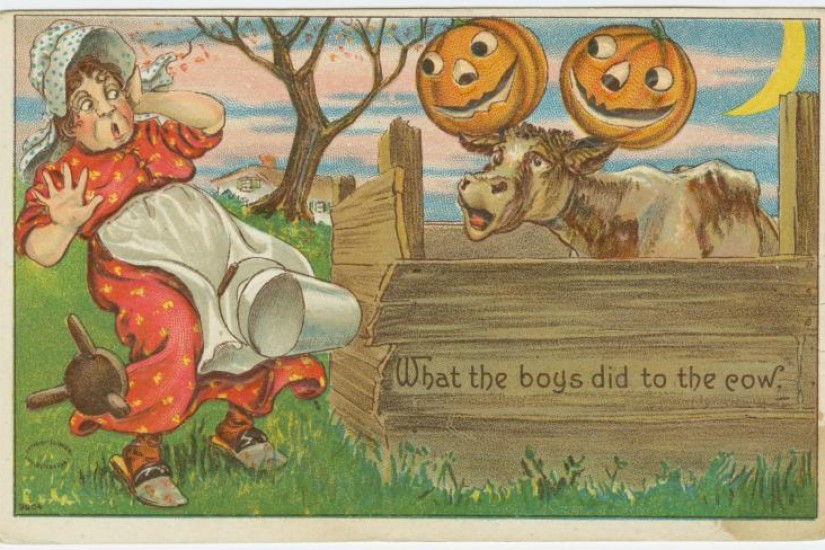Halloween in early 19th-century America was a night for pranks, tricks, illusions, and anarchy. Jack-o’-lanterns dangled from the ends of sticks, and teens jumped out from behind walls to terrorize smaller kids. Like the pumpkin patches and pageants that kids love today, it was all in good fun—but then, over time, it wasn’t.
As America modernized and urbanized, mischief turned to mayhem and eventually incited a movement to quell what the mid-20th-century press called the “Halloween problem”—and to make the holiday a safer diversion for youngsters. If it weren’t for the tricks of the past, there’d be no treats today.
Halloween was born nearly 2,000 years ago in the Celtic countries of northwestern Europe. November 1 was the right time for it—the date cut the agricultural year in two. It was Samhain, summer’s end, the beginning of the dangerous season of darkness and cold—which according to folklore, created a rift in reality that set spirits free, both good and bad. Those spirits were to blame for the creepy things—people lost in fairy mounds, dangerous creatures that emerged from the mist—that happened at that time of year.
Immigrants from Ireland and Scotland brought their Halloween superstitions to America in the 18th and 19th centuries, and their youngsters—our great- and great-great grandfathers—became the first American masterminds of mischief. Kids strung ropes across sidewalks to trip people in the dark, tied the doorknobs of opposing apartments together, mowed down shrubs, upset swill barrels, rattled or soaped windows, and, once, filled the streets of Catalina Island with boats. Pranksters coated chapel seats with molasses in 1887, exploded pipe bombs for kicks in 1888, and smeared the walls of new houses with black paint in 1891. Two hundred boys in Washington, D.C., used bags of flour to attack well-dressed folks on streetcars in 1894.
In this era, when Americans generally lived in small communities and better knew their neighbors, it was often the local grouch who was the brunt of Halloween mischief. The children would cause trouble and the adults would just smile guiltily to themselves, amused by rocking chairs engineered onto rooftops, or pigs set free from sties. But when early 20th-century Americans moved into crowded urban centers—full of big city problems like poverty, segregation, and unemployment—pranking took on a new edge. Kids pulled fire alarms, threw bricks through shop windows, and painted obscenities on the principal’s home. They struck out blindly against property owners, adults, and authority in general. They begged for money or sweets, and threatened vandalism if they didn’t receive them.
